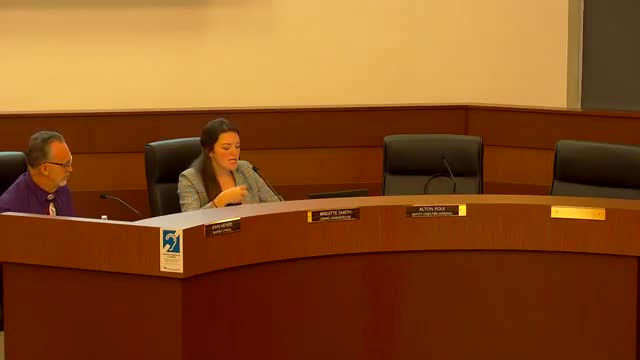Parking Controversy Sparks Debate Over Public Access and Liability
October 03, 2024 | Eastpointe City, Macomb County, Michigan
This article was created by AI summarizing key points discussed. AI makes mistakes, so for full details and context, please refer to the video of the full meeting. Please report any errors so we can fix them. Report an error »

During a recent government meeting, discussions centered around the allocation of parking spaces for a local business, Keystone Auto, and the implications for public access and liability. The conversation highlighted the need for a balance between providing adequate parking for the business while ensuring some spaces remain accessible to the public.
One proposal suggested designating 29 out of 30 parking spots exclusively for Keystone Auto, with only one spot reserved for public use. This approach aimed to limit liability for potential accidents, such as slip and fall incidents, on the property. However, some officials expressed concerns that this arrangement could defeat the purpose of promoting community access and safety.
An alternative suggestion emerged, proposing that instead of clearly marking spaces as public, a percentage—potentially 10%—could remain unmarked. This would allow Keystone Auto to manage the parking for its customers while still providing some level of public access without overtly advertising it. The idea was to ensure that the parking lot serves the business's clientele while not completely restricting access to the general public.
Officials also discussed the broader implications of designating parking as private. They noted that overly restrictive parking policies could be detrimental to the community, especially in downtown areas where businesses rely on foot traffic and shared resources. The conversation underscored the importance of finding a solution that supports local businesses while fostering a welcoming environment for all visitors.
As the meeting concluded, it was clear that further discussions would be necessary to finalize a parking strategy that balances the needs of Keystone Auto with the interests of the community at large.
One proposal suggested designating 29 out of 30 parking spots exclusively for Keystone Auto, with only one spot reserved for public use. This approach aimed to limit liability for potential accidents, such as slip and fall incidents, on the property. However, some officials expressed concerns that this arrangement could defeat the purpose of promoting community access and safety.
An alternative suggestion emerged, proposing that instead of clearly marking spaces as public, a percentage—potentially 10%—could remain unmarked. This would allow Keystone Auto to manage the parking for its customers while still providing some level of public access without overtly advertising it. The idea was to ensure that the parking lot serves the business's clientele while not completely restricting access to the general public.
Officials also discussed the broader implications of designating parking as private. They noted that overly restrictive parking policies could be detrimental to the community, especially in downtown areas where businesses rely on foot traffic and shared resources. The conversation underscored the importance of finding a solution that supports local businesses while fostering a welcoming environment for all visitors.
As the meeting concluded, it was clear that further discussions would be necessary to finalize a parking strategy that balances the needs of Keystone Auto with the interests of the community at large.
View full meeting
This article is based on a recent meeting—watch the full video and explore the complete transcript for deeper insights into the discussion.
View full meeting
